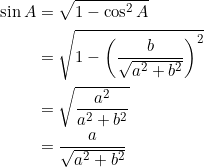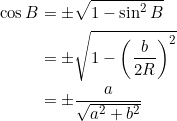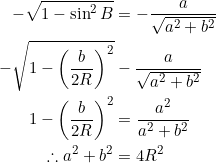In a non-right triangle ![]() , let
, let ![]() be the side-lengths,
be the side-lengths, ![]() the altitudes,
the altitudes, ![]() the feet of the altitudes from the respective vertices,
the feet of the altitudes from the respective vertices, ![]() the midpoints of sides
the midpoints of sides ![]() ,
, ![]() the Euler points,
the Euler points, ![]() the circumradius,
the circumradius, ![]() the circumcenter,
the circumcenter, ![]() the nine-point center,
the nine-point center, ![]() the orthocenter,
the orthocenter, ![]() the reflection of
the reflection of ![]() over side
over side ![]() ,
, ![]() the reflection of
the reflection of ![]() over side
over side ![]() , and
, and ![]() the reflection of
the reflection of ![]() over side
over side ![]() . Then the following seventy-five statements are equivalent:
. Then the following seventy-five statements are equivalent:









































 or
or 




 is the reflection of
is the reflection of  over side
over side 
 is the reflection of
is the reflection of  over side
over side 
 is congruent to
is congruent to 
 is congruent to
is congruent to 
 is isosceles with
is isosceles with 
 is isosceles with
is isosceles with 
 is right angled at
is right angled at 
 is the circumcenter of
is the circumcenter of 
 is right-angled at
is right-angled at 
 is right-angled at
is right-angled at 
- quadrilateral
 is a rectangle
is a rectangle - the points
 are concyclic with
are concyclic with  as diameter
as diameter - the reflection
 of
of  over
over  lies internally on
lies internally on 
- the reflection
 of
of  over
over  lies externally on
lies externally on 
- radius
 is parallel to side
is parallel to side 
 is the reflection of
is the reflection of  over side
over side 
- segment
 is perpendicular to side
is perpendicular to side 
- the nine-point center lies on

- the orthic triangle is isosceles with

- the geometric mean theorem holds
- the bisector of
 has length
has length  , where
, where 
- the orthocenter is a reflection of vertex
 over side
over side 
- segment
 is tangent to the circumcircle at point
is tangent to the circumcircle at point 
- median
 has the same length as the segment
has the same length as the segment 
- the bisector
 of
of  is tangent to the nine-point circle at
is tangent to the nine-point circle at 
 is a convex kite with diagonals
is a convex kite with diagonals  and
and 
- altitude
 is tangent to the nine-point circle at
is tangent to the nine-point circle at 
- chord
 is a diameter of the nine-point circle
is a diameter of the nine-point circle - segment
 is tangent to the nine-point circle at
is tangent to the nine-point circle at  .
.
It will take quite some time to establish the above equivalence. In this post we select just five.
This follows from the Pythagorean identity ![]() .
.

By the extended law of sines, we have that ![]() . And so:
. And so:

The converse also holds.
We use the identity ![]() and the extended sine law
and the extended sine law ![]() :
:

Since ![]() is non-right, take
is non-right, take ![]() .
.

From example 3 we had ![]() . By the converse of example 1
. By the converse of example 1 ![]() . Thus
. Thus ![]() .
.
Takeaway
In a non-right triangle ![]() , let
, let ![]() be the side-lengths and
be the side-lengths and ![]() the circumradius. Then the following statements are equivalent:
the circumradius. Then the following statements are equivalent:
More in the task below.
Task
- (Late seventies) In a non-right triangle
 , let
, let  be the side-lengths,
be the side-lengths,  the altitudes,
the altitudes,  the feet of the altitudes from the respective vertices,
the feet of the altitudes from the respective vertices,  the midpoints of sides
the midpoints of sides  ,
,  the Euler points,
the Euler points,  the circumradius,
the circumradius,  the circumcenter,
the circumcenter,  the nine-point center,
the nine-point center,  the orthocenter,
the orthocenter,  the reflection of
the reflection of  over side
over side  ,
,  the reflection of
the reflection of  over side
over side  , and
, and  the reflection of
the reflection of  over side
over side  . PROVE that the following seventy-eight statements are equivalent:
. PROVE that the following seventy-eight statements are equivalent:












































 or
or 




 is the reflection of
is the reflection of  over side
over side 
 is the reflection of
is the reflection of  over side
over side 
 is congruent to
is congruent to 
 is congruent to
is congruent to 
 is isosceles with
is isosceles with 
 is isosceles with
is isosceles with 
 is right angled at
is right angled at 
 is the circumcenter of
is the circumcenter of 
 is right-angled at
is right-angled at 
 is right-angled at
is right-angled at 
- quadrilateral
 is a rectangle
is a rectangle - the points
 are concyclic with
are concyclic with  as diameter
as diameter - the reflection
 of
of  over
over  lies internally on
lies internally on 
- the reflection
 of
of  over
over  lies externally on
lies externally on 
- radius
 is parallel to side
is parallel to side 
 is the reflection of
is the reflection of  over side
over side 
- segment
 is perpendicular to side
is perpendicular to side 
- the nine-point center lies on

- the orthic triangle is isosceles with

- the geometric mean theorem holds
- the bisector of
 has length
has length  , where
, where 
- the orthocenter is a reflection of vertex
 over side
over side 
- segment
 is tangent to the circumcircle at point
is tangent to the circumcircle at point 
- median
 has the same length as the segment
has the same length as the segment 
- the bisector
 of
of  is tangent to the nine-point circle at
is tangent to the nine-point circle at 
 is a convex kite with diagonals
is a convex kite with diagonals  and
and 
- altitude
 is tangent to the nine-point circle at
is tangent to the nine-point circle at 
- chord
 is a diameter of the nine-point circle
is a diameter of the nine-point circle - segment
 is tangent to the nine-point circle at
is tangent to the nine-point circle at  .
.
(Target reached! And surpassed!)
- (Extra feature) If
 satisfies equation (??), PROVE that its nine-point center
satisfies equation (??), PROVE that its nine-point center  divides
divides  in the ratio
in the ratio  .
.